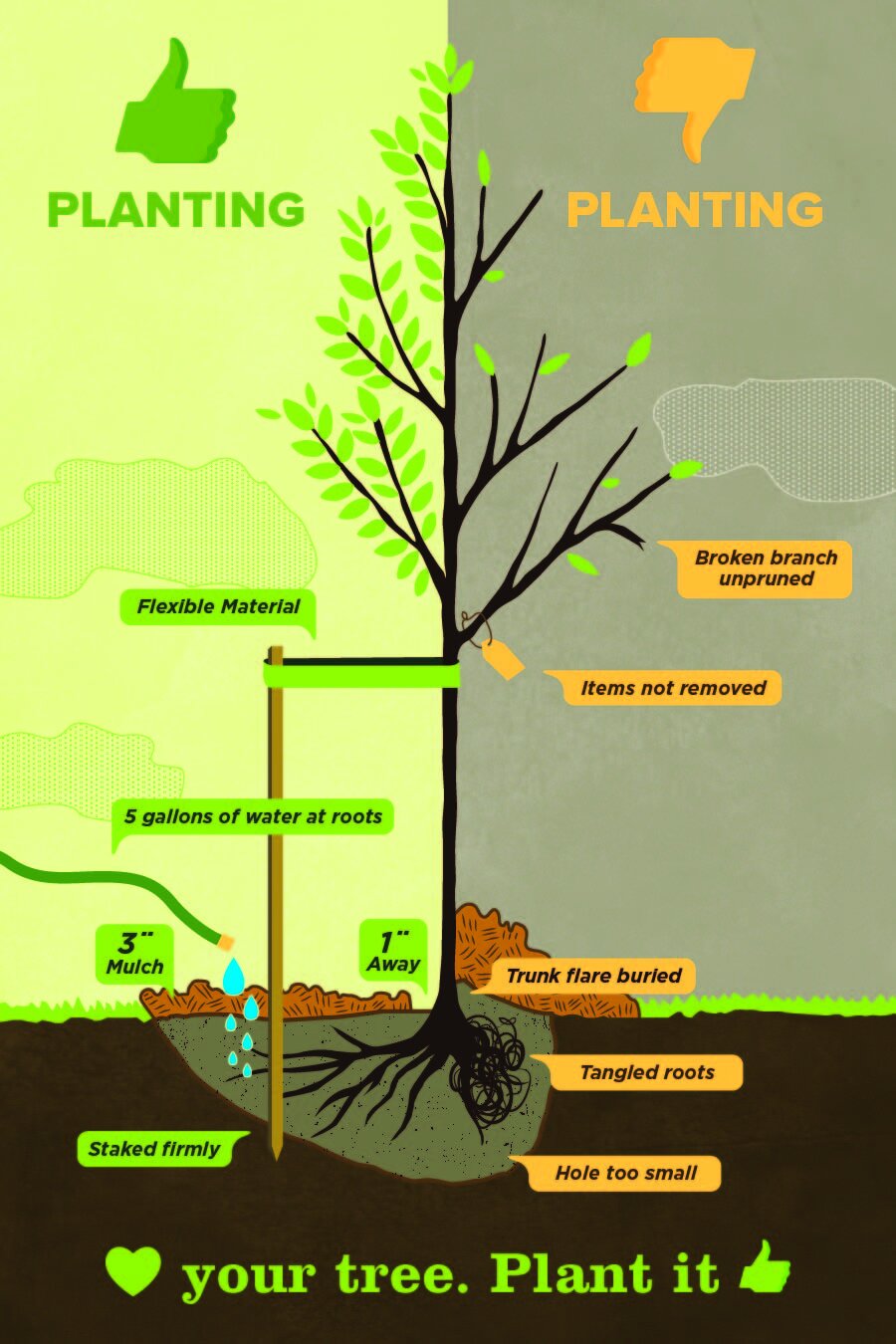
Tree Care
Have a new tree that you’re ready to plant and care for? Here are some tree care tips and steps to help you along the way!
Check out our tree care YouTube playlist for more helpful videos.
Jump to the section you are looking for:
PLANTING
Placement: Carefully planning the tree location is the first step to ensuring that a tree survives for years to come without causing damage or needing maintenance. Make sure to call 8-1-1 to have the underground utilities marked.
Tree Type: Some trees perform better in some locations than others. Understanding how a tree is likely to grow over time and what conditions it prefers can help you figure out what kind of tree might do well in your yard or right-of-way. For instance, plant small trees (less than 25' when fully grown) under power lines.
Resource:
Planting: There are many details when it comes to planting a tree. Watch our YouTube video for a full tutorial. Resource: Tree Planted graphic
General Planting Guidelines:
Dig a wide hole twice the size of the rootball.
Remove all packaging (container, burlap, bag, twine, stakes, tags, etc).
Loosen the dirt in the roots.
Look for roots that are circling the tree and pull them away from the tree. Circling roots can suffocate the tree as they grow.
Place the tree in the hole and make sure that the root flare is above ground. It can be helpful to place a shovel across the hole to make sure that the root flare is not buried under soil. Watch the video for a visual.
Fill the hole with soil.
Water the tree immediately after planting.
Create a ring of mulch that doesn’t touch the trunk of the tree to keep the tree safe from lawn tools and competing weeds
Learn more at on our YouTube channel.
WATERING IN SUMMER
Newly planted trees must be watered regularly through the dry season for the first three years. From June to October, water your tree with fifteen gallons of water a week. Note that irrigation for lawns is typically not enough water for the tree.
Easy methods of hand watering include:
Watering bags - bags such as TreeGators, Ooze Tubes, etc. Fill and walk away while the bag drains slowly to the root system.
Drip hose - Be sure to wrap around the root mass several times to ensure enough water is delivered and turn on for a few hours. Adding an inexpensive timer to the hose can be helpful.
Clean five gallon bucket - Drill several small holes in the bottom of the bucket, place next to the trunk of the tree and fill. Fill a few times to deliver the correct amount of water for your tree, or use several buckets. Be sure to bring buckets in when not in use
BASIC TREE CARE
Maintain a mulch circle around the trunk of the tree. Mulch helps retain moisture, suppress weeds and adds nutrients to the soil. Having mulch around the tree will also help prevent damage to the bark from lawn mowers and string trimmers. Do not pile mulch up around the trunk of the tree as this leads to trunk decay. Resource: Healthy Growth graphic
Make sure to take your watering device off of the tree at the first freeze and store it inside over winter. Then refresh your mulch ring.
After one year, remove any stakes or supports installed with planting after one year.
After two or three years, the tree may need to be pruned to train the tree for street, alley and sidewalk clearances. For more information about proper pruning, please visit the Pruning web page or enroll in a free workshop at EnviroHouse.
RESOURCES
Here are resources to help your tree live a happy healthy life!










